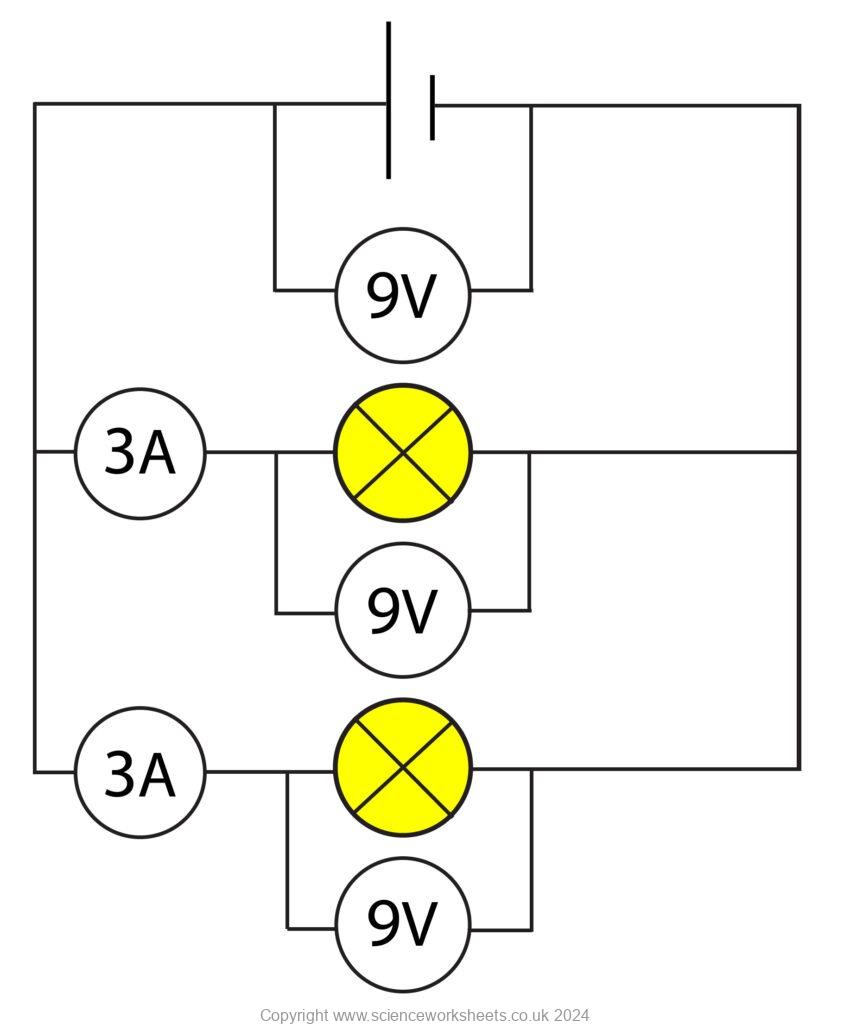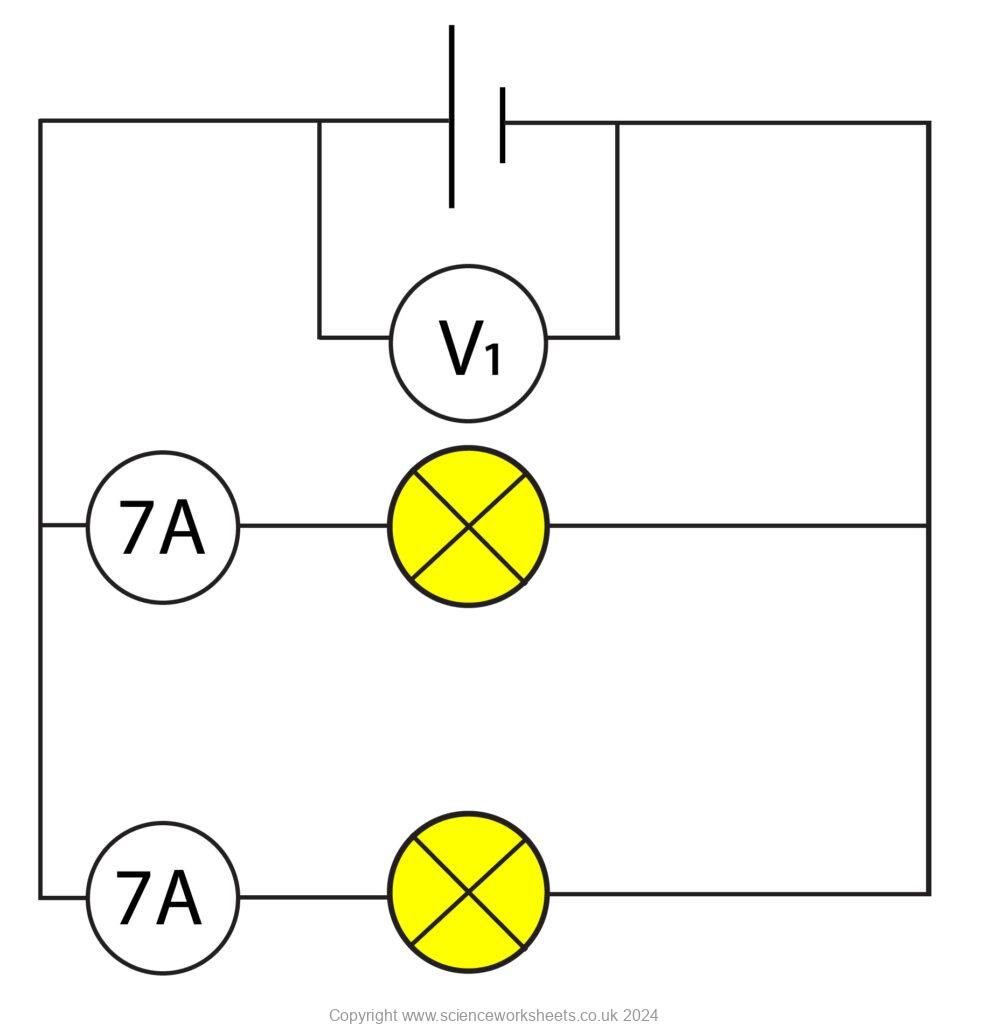AQA GCSE Parallel Circuit Calculations (Combined Science)

1.Both bulbs are identical in the circuit below. Calculate the resistance of one of the bulbs in the circuit, when a current of 2.5 Amps flows through each bulb.

V= IR
R = V/I
R = 5/2.5 = 2 ohms
2. In the circuit below calculate the current that flows through the 21 ohm resistor

In the circuit above the potential difference across both resistors is the same as that of the cell, 12V.
V = IR
I = V/R
I = 12/21 = 0.57A
3. The total resistance of the circuit is 1.67Ω. Calculate the the potential difference across the cell.

In a parallel circuit, the total current is the sum of the branches
2A+ 2A + 2A = 6A
V = I x R
V = 6A x 1.67 ohms
V = 10V
1.Calculate the resistance of each bulb in the circuit below.

2. The total resistance in the circuit below is 5 ohms. Calculate the potential difference of the cell in the circuit below.

3. In a parallel circuit, the potential difference across each component is 10V. The total current is 12A. The circuit contains only two bulbs and the cell. Calculate the resistance of each bulb.
Absorption and Emission of EM Radiation
JJ Thomson and Plum pudding model
Ernest Rutherford and the Nuclear Model
Niels Bohr changing the Nuclear Model
Discovering the Proton and Neutron
Measuring radiation from radioactivity
Radiation types and properties
Random nature of radioactive decay
Radioactive contamination or irradiation
Hazards of contamination and irradiation
Studies on the effects of radiation on humans